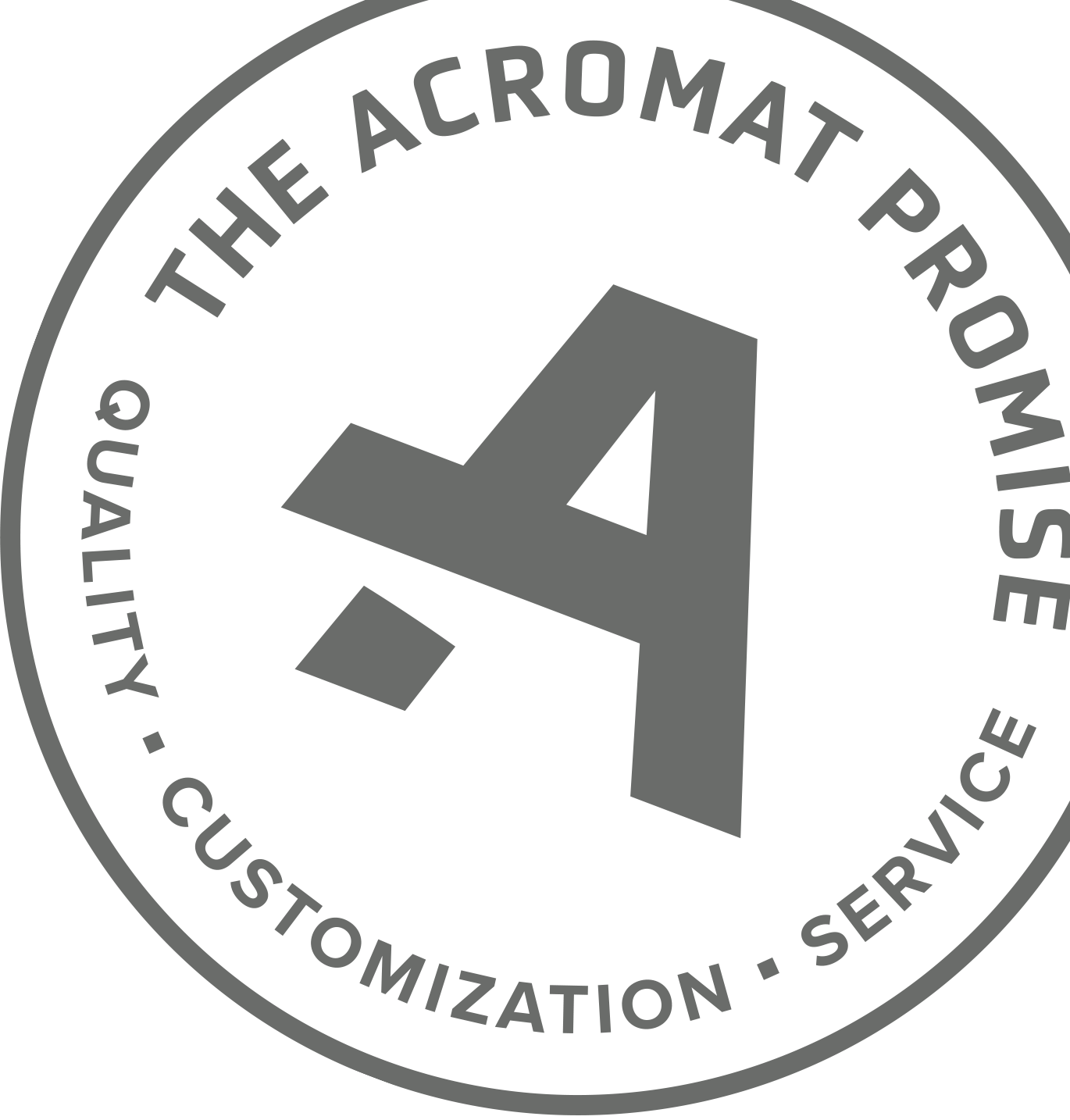Tired of shape limitations, seams coming apart, overly complex installations and trip hazards, Andersen Windows traded modular tiles for one-piece custom anti-fatigue mats designed to fit. James Doyle, Continuous Improvement Technician, shares 4 reasons in particular his team made the change:
- Shape limitations
- Durability issues
- Trip hazards
- Complicated installation
1. Shape limitations
Tiles are “snapped” together to fit custom layouts. However, they are square which limits users to 90-degree configurations. As a result, the tiles used by Andersen Windows had to be manually cut and pieced next to each other to fit the area. As you can see in the left photo below, this was a clear trip hazard.
The custom anti-fatigue mats James and his team designed with AcroMat include multiple unique angles to seamlessly fit the workstation, all in one piece.
 Before: Seams coming apart, gaps in coverage and ergonomic, trip and slip hazards. After: one-piece seamless design; area fully covered with non-slip, cushioned support.
Before: Seams coming apart, gaps in coverage and ergonomic, trip and slip hazards. After: one-piece seamless design; area fully covered with non-slip, cushioned support.
Dig Deeper: 4 Reasons Andersen Windows Traded Modular Tiles for Custom Anti-Fatigue Mats Visual eBook
2. Durability issues
Modular tiles are made from plastic material. It’s versatile but not impervious to liquids or chemicals. In harsher environments, chemicals embed in the seams and pull the tiles apart. Again, in addition to rapidly aging the tiles, this was is a clear trip hazard for James' team.
In the photo below, the custom 100-1 Series anti-fatigue mat is made from 100% nitrile. The virgin, closed cell material is impervious to liquids and chemicals. Pure nitrile is also unique in that it never flattens, providing critical ergonomic support year after year.
 Before: Particles and chemicals burrowing into tile seams, pulling them apart and creating trip hazards in less than a year. After: 100% nitrile impervious to liquids and chemicals.
Before: Particles and chemicals burrowing into tile seams, pulling them apart and creating trip hazards in less than a year. After: 100% nitrile impervious to liquids and chemicals.
3. Trip hazards
In the photo below, on the left, the tiles are unable to be connected through the small gap between equipment. These shape limitations result in yet another trip hazard.
On the right, with the ability to be designed to any shape and size with AcroMat’s proprietary custom mat building tool, AcroSketch, the one-piece custom mat fits seamlessly through the area; no gaps, on/off stepping, or inconsistent thicknesses.
 Before: Because tiles are limited in shape, they have to be laid next to each other (disconnected) in tight fits. This creates yet another trip hazard. After: Single custom mat, consistent surface, no mat-related trip or slip hazards.
Before: Because tiles are limited in shape, they have to be laid next to each other (disconnected) in tight fits. This creates yet another trip hazard. After: Single custom mat, consistent surface, no mat-related trip or slip hazards.
4. Complicated installation
Modular tile systems come with a packet of instructions; each tile and border labeled with a number, letter, or both. Tile by tile, you have to piece them together. Often, facilities have to shut down entire lines for hours to complete the process. As James notes below, installing a custom anti-fatigue mat is as simple as 1. unbox, 2. lay mat out on the floor.
 Before-after.
Before-after.
"Installing these AcroMats was easier than any modular applications I’ve dealt with in the past," shares James. "Thanks so much for your help with these mats. The operator feedback has been phenomenal."
Many companies find modular tiles useful. Whether tiles or custom anti-fatigue mats, what’s right for your facility comes down to the challenge you’re trying to solve (e.g., recordable injuries), your environment, the layout shape and size, and the comfort your employees need.
--
Put AcroMat to the test: Get a free sample mat




